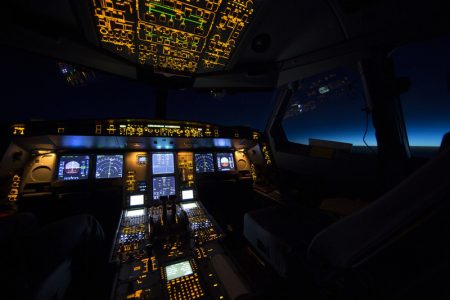
Improvements in flight operations expediting commercial avionics market growth, says Frost & Sullivan
Maryam Farag
Economy Aerospace aviation avionics Economy flight growth industry market Operations R&D Report
Photo: Frost & Sullivan.
Frost & Sullivan’s recent analysis of the global commercial avionics industry finds that airlines’ increasing focus on improving flight operations is expediting market growth.
Digital glass displays, connected flight management systems, and HUD (head-up display) are gaining traction due to the emphasis on enhancing flight operations. Airlines can improve safety and efficiency by applying avionics systems, which encompass communication, navigation, and surveillance equipment.
Primarily driven by global regulatory mandates, the total global commercial avionics market is estimated to reach $63.34 billion by 2030, up from $34.90 billion in 2020, at a compound annual growth rate (CAGR) of 6.1 per cent.
Asia-Pacific, North America, and Europe will be the top three avionics markets over the forecast period. The high aircraft orders from airlines are driving the acceleration of the avionics market in Asia-Pacific. Similarly, regulatory mandates from the Federal Aviation Administration and European Union Aviation Safety Agency will inflate the demand for avionics in North America and Europe.
“With sustainable aviation gaining traction, regulatory authorities are using a phased approach to reduce the industry’s carbon footprint, resulting in the acceleration of the research and development of new aircraft that are either 100% electric or are a hybrid model,” said Waseem Ahmed Khan, Industry Analyst, Aerospace & Defense Practice, Frost & Sullivan. “This has also resulted in the creation of a new revenue stream in the form of UAM (urban air mobility). Many leading aircraft original equipment manufacturers and mobility and technology companies are also focusing on the development of electric vertical take-off and landing aircraft, which will bring in new growth opportunities for avionics suppliers.”
According to Frost & Sullivan, to tap into the growth opportunities exposed by the global commercial avionics industry, market participants should focus on:
- Increasing R&D investment to develop the latest IMA systems: Avionics suppliers should increase research and development investment in the latest IMA systems, replacing the old avionics with minimum aircraft downtime and disruptions to operations.
- Partnering with Chinese avionics suppliers to increase their presence in local aircraft platforms: They must check the current state of their business to help local vendors by sharing technical expertise on hardware and software.
- Offering hardware solutions suitable for low Earth orbit (LEO) capacities: Vendors should develop smaller and cheaper hardware for the SATCOM service portfolio by partnering with satellite operators.
